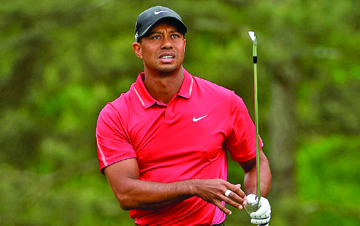by Ed Mate, Executive Director
Colorado Golf Association
For most golf fans the return of Tiger Woods is a long overdue and welcoming sight. It is well documented that Tiger’s influence on Nielsen ratings is as direct and powerful as low interest rates on the stock market. What amazes me are those who believe that the sport either a) doesn’t really need him or even, b) is better off without him. For those it goes something like, “We have all of the young guns, like Rory, Rickie, Jordan and Dustin.” Pardon me, but that sounds more like roll call at an after school daycare than the lineup of a world class sports franchise like the PGA Tour. Let’s be honest folks, the PGA Tour needs Tiger — no, not to survive, but if the sport hopes to enjoy anything remotely close to its previous notoriety, cache and basic “cool factor” it is going to need more than Chez Reavie and Ryan “I’m no Arnold” Palmer slugging it out on the back-nine on Sunday.
Personally, the reason I am excited about Tiger’s return is only partly due to his amazing talent and golf charisma. Yes, I will enjoy watching him attempt to regain his previous form, but I am more interested in seeing how he can use his “rebirth” (if indeed that is what we are witnessing) to influence a sport that has evolved significantly since his last major championship win in 2008. Over the past 10 years the game has rolled out more innovative and forward-thinking growth of the game initiatives than it did in the previous 100 years. Drive-Chip-Putt, PGA Junior League, LPGA/ USGA Girls Golf, and Youth on Course are four of the keystone programs that have been embraced by the golf community on the local, state and national level. These programs are all designed, in different ways, to attract a wider and more diverse audience to the sport. Time will tell if they will be successful, but early evidence is extremely encouraging.
What does all this have to do with the Colorado Golf Association, or for that matter, what does it have to do with the Denver and Cherry Creek corridor who receives this publication? Quite a lot actually. The Colorado Golf Association just so happens to own and operate CommonGround Golf Course, the former Lowry Air Force Base course that went through a complete metamorphosis in 2008 — the same year Tiger took down Rocco Mediate in an 18-hole playoff to win the U.S. Open — the last of his 14 major golf championships. CommonGround, as its name suggests, was designed to be “a place for all and all the game teaches.” CommonGround is the Colorado Golf Association’s vehicle to introduce golf to those who previously had no access to the game.
The CommonGround campus includes an 18-hole championship golf course designed by world-renowned architect, Tom Doak. But it also includes a practice facility that is regarded as one of the best in the state, a nine-hole Junior Par 3 course that is absolutely free to kids under the age of 18 and an expansive community putting green that is free to everyone with a putter and some time on their hands. But more important than the campus itself, it is the programs that are hosted at CommonGround that make it such a community asset. Among these programs is the Solich Caddie & Leadership Academy that was featured in this publication last year — a program that introduces 30 to 35 young adults (mostly 8th and 9th graders) to a summer job, leadership training, and community service. The CGA uses CommonGround to create partnerships with organizations such as Big Brothers-Big Sisters, Special Olympics and a dozen neighborhood schools to bring the game to those who would never otherwise experience it. CommonGround hosts over 200 outside groups every year who make use of the facility to raise money for charity, provide after work recreation to their employees, or simply provide a gathering place for old friends.
CommonGround most certainly is living up to its name, but I can’t help but wonder how much more we could do with a champion like Tiger Woods serving an ambassadorial role. The community surrounding CommonGround is one of the most diverse of its size anywhere in the country. When you drive the Havana corridor you will see every ethnic restaurant you can imagine. Wouldn’t it be cool if Tiger used his notoriety and global brand to encourage those living in this community to identify more strongly with the sport of golf? Tiger has described himself as a “Cablinasian” speaking to his Caucasian, Black American, American Indian and Asian heritage. What could be more perfect to promote CommonGround and all it represents than Tiger Woods’ return to the world stage of golf?
With Tiger’s return it is my hope that he will do more than simply hoist trophies once again. It is my hope that instead of slamming clubs and dropping expletives, the new and improved Tiger will speak more openly about his diverse ethnic background and encourage those who look more like him to consider taking up the sport. Ultimately, Tiger Woods can do so much more than move the needle with sponsors and televisions viewers. He truly can help change the face of the game and those who play it for generations to come. In 2008 the game of golf wasn’t ready and neither was Tiger. Today the game has done its part as evidenced by what is happening right here at CommonGround.
Come on, Tiger, it’s your turn!
Tiger’s Back: Tiger Woods competed in his first back-to-back tournaments since April 2017 when he teed off at the Honda Classic on February 22, 2018, at PGA National Resort and Spa in Palm Beach Gardens, Florida.

